#Matanzas Province
Explore tagged Tumblr posts
Text

Matanzas, Cuba.
117 notes
·
View notes
Text
Rafael Horacio Moreno

Rafael Horacio Moreno, a 74-year-old former officer of the Argentine Federal Police, remains in custody accused of the crime of "homicide aggravated by the use of a firearm." His house is under police guard, because they fear a new reaction from the victim's family. Legitimate defense, violent emotion or accident, the three scenarios that could benefit him.
According to sources involved in the case, the courts will have to assess whether there was self-defense or whether the aggressor – a former officer of the Argentine Federal Police – acted in a state of violent emotion, two mitigating factors that could reduce the sentence.

In his statement, the accused did not give any signs of such conduct, but rather put forward the theory of an accidental shot : “It went off,” he tried to explain about the moment in which he pulled the trigger and killed Sergio David Díaz , the 40-year-old bus driver who was yelling at him because he had taken out a firearm when he went to demand that they turn down the music because he couldn't sleep.
Moreno's version does not match the video that recorded the entire sequence of the incident between the neighbors. The images show how the ex-policeman hammers the weapon and points it at the bus driver's abdomen when the latter was yelling at him and attacking him to get him to leave.
“What are you doing here? Who do you think you are?” the victim told the former officer. At that moment, the argument became more violent and ended when Moreno shot the driver, who immediately began to scream in pain.
Moreno testified on Thursday before the prosecutor of La Matanza, Matías Folino. He expressed regret for having gone out into the street with his .38 caliber revolver. “I don’t know why I grabbed the gun,” he lamented.
Following the investigation, the judicial officer asked the judge of guarantees Agustín Pablo Gossn to prosecute the former police officer with preventive detention for “homicide aggravated by the use of a firearm.”
In the next few hours, the courts will have to decide whether to grant him house arrest and whether to keep him at home, taking into account the problems with his neighbours.
This Thursday, several of the victim's relatives threw stones tried to force their way into the former police officer's house, where Liliana, his wife, was, and prevented an ambulance from arriving to assist her in the midst of a nervous breakdown. Yesterday, the situation in the neighborhood was a little calmer, although a police patrol from the Buenos Aires province guarded the house to avoid new incidents.
“There were seven of us, all adults, and me, who am the owner of the house. We want justice, he came with the gun in his waistband. And we are afraid that they will release him because he is a police officer and he will come back here. We are unprotected,” said Karina, the cousin of the murdered man.
“The wife watched as her husband shot Sergio and then said that he deserved it, that what her husband did was okay. We expected her to come and apologize, but for her, what her husband did is okay,” he continued.
"He fired the shot as if nothing had happened, he just stood there watching, turned around and went home. I feel devastated, we want justice to be done and for it not to go unpunished," the woman concluded.
15 notes
·
View notes
Text
"In some ways, the battle for Florida represented a burst of Pan-Africanism, as runaways from Georgia joined with Africans aligned with indigenes (Seminoles) and Africans from Cuba and the Bahamas in fighting the United States. Painful experience with the United States, the most tenacious of the slaveholding powers, convinced the enslaved that republican victory in Florida would be a defeat for Africans. This placed them in objective alliance with London and, to a degree, Madrid. ... But there was a yawning contradiction in this anti-republican alliance because London was pressing Havana on the matter of anti-slave trading, which Madrid resisted, thus complicating the possibility of a full-blown relationship. Besides that, slave traders on the peninsula, who had profited handsomely under Spanish administration and had also developed extensive holdings in Cuba, were unhappy with the ongoing relationship between London and armed Africans and their militant indigenous allies. Though Andrew Jackson thought he had destroyed the Negro fort in 1816, by 1818 he was receiving disturbing reports about yet another encampment featuring armed Africans in the hundreds. So menacing was this African presence, said Jackson, that it provided sufficient rationale for ousting the Spanish from Florida. ... In 1821 when the Stars and Stripes was hoisted over Florida, a steady stream of vessels jammed with Africans and free Negroes headed southward to Cuba, unwilling to see if the racist despotism that prevailed north of St. Augustine would now be imposed—as it was. The republic swallowed Florida and, quite wisely, Cuba absorbed a massive influx of free Negroes who fled as a result. But this influx also included a considerable number of runaway slaves fleeing Georgia and points northward. ... With the arrival of the republicans, slave raids into Florida became more prevalent with marauders descending on the state from Georgia and the Carolinas. The site known as Angola—reflective of the West African origins of the inhabitants on the Manatee River near the Gulf Coast and present-day Bradenton—was a juicy target. Andrew Jackson was accused of sending his officers there to capture and sell any person of color they could collar. Since importation of Africans was supposedly verboten, this increased the value of their prey, as the price for one African soared to a frothy $1,000. Many of these Africans managed to flee to Cuba, bringing with them an anti-Washington attitude that came to define the entire island. Decades later, according to one scholar, their descendants ‘were the supporters of Fidel Castro when he came out of Matanzas Province’ on his triumphant march to Havana in 1959. After Angola was destroyed and hundreds of Africans were captured and returned to enslavement, another settlement arose known as ‘Negro Point.’ Some escaped to the Bahamas, where their descendants continue to reside and where they helped to reinforce anti-U.S. sentiment that complicated bilateral relations with London for years to come.
Having tasted the bitterness of republicanism, these migrants were in no mood to stand idly by as their new home was compelled to endure the destiny that was Florida’s where those of African ancestry were at times driven from an elevated status to virtual—or actual—enslavement. Certainly, the republican absorption of Florida was a massive and historic setback for Africans on both sides of the straits, though in the long run it strengthened a growing attitude in Cuba that was hostile to the republic."
Gerald Horne, Race to Revolution: the US and Cuba During Slavery and Jim Crow (2014)
11 notes
·
View notes
Text
Havana, August 31– A shipment of 800 tons of wheat flour — collected by solidarity activists in the U.S. — has arrived in Cuba. The donation will provide bread for millions of people in the provinces of Pinar del Rio, Artemisa, Mayabeque, Matanzas and Havana.This campaign was organized in the United States by the New York City-based “Let Cuba Live: Bread for Our Neighbors” campaign.
14 notes
·
View notes
Text
A new, widespread power outage plunged Cuba into darkness on Wednesday after one of the island’s major power plants failed, leaving millions without electricity and forcing authorities to suspend classes and work activities indefinitely. The Electric Union, the state-run power company, attributed the incident to the shutdown of the Antonio Guiteras Thermoelectric Plant in Matanzas province, east of Havana. The blackout, which occurred shortly after 2 a.m., affected the entire nation, the company said on X. As of Wednesday morning, power began to be restored gradually in some parts of the country, including Havana. Cuba’s Minister of Energy and Mines Vicente de la O said later in a televised address that service would be fully restored by Thursday. On Oct. 18, the island suffered a significant blackout that, added to the passage of Hurricane Oscar two days later, left the island without electricity for several days. Weeks later, Hurricane Rafael’s strong winds triggered another system-wide blackout that left the national energy system disconnected again. Cuba’s power grid has been plagued by frequent outages in recent months, with more than half of the country experiencing power cuts during peak hours. The outages are primarily caused by fuel shortages and aging infrastructure. In many parts of the island, electricity is crucial for cooking and water pumping.
3 notes
·
View notes
Photo



The Canimar River in Matanzas Province, Cuba
66 notes
·
View notes
Text

Carlota Lucumi (? - November 6, 1844) a kidnapped African woman, is known as one of the leaders of the slave rebellion at the Triunvirato plantation in Matanzas, Cuba. She was an African-born free woman from the Kingdom of Benin, West Africa.
She was kidnapped around the age of ten to the Matanzas province of Cuba. She lived and worked as an enslaved on the Triunvirato sugar plantation. Although slavery had died in nearby Haiti in 1803 and was being abolished throughout Latin America and in the British Empire, it continued in Cuba and she suffered under harsh conditions and brutal treatment by Spanish plantation owners.
She and another enslaved woman, Firmina, began to plot a rebellion among the enslaved. A plantation owner found Fermina as she was distributing this information to other plantations and had her severely beaten and imprisoned. She continued to organize the uprising. She sent coded messages by talking drums to nearby enslaved, coordinating the rebellion.
On November 5, 1843, she along with other tribal leaders, initiated what became known as the Triunvirato Rebellion. Fermina and a dozen other enslaved who were imprisoned were released. The rebels burned the house that had been used to torture enslaved, killed the overseer’s daughter, and forced the owner of the Triumvirato plantation to flee.
They went to the Acane plantation, killing as many whites as they could find. They destroyed five sugar plantations and several coffee and cattle estates. The rebellion ended in the early morning hours of November 6 at the San Rafael sugar mill as the enslaved rebels, armed with machetes and spears, were overwhelmed by heavily armed Spanish colonial authorities. She was captured and killed during the battle, tied to horses which dragged her to death. Fermina was executed.
1844 became known as the “Year of the Lashes” in Cuba. Slaveholders brutalized enslaved people on the island to punish both those who participated in the uprising and intimidate those who did not. There is a monument to her legacy at the Triumvirato sugar mill. #africanhistory365 #africanexcellence
3 notes
·
View notes
Text
instagram
[🚨 Save + Share] 𝐖𝐡𝐲 𝐲𝐨𝐮 𝐧𝐞𝐞𝐝 𝐭𝐨 𝐩𝐮𝐭 𝐕𝐚𝐫𝐚𝐝𝐞𝐫𝐨 𝐁𝐞𝐚𝐜𝐡, 𝐂𝐮𝐛𝐚 𝐨𝐧 𝐲𝐨𝐮𝐫 𝐛𝐮𝐜𝐤𝐞𝐭 𝐥𝐢𝐬𝐭 🏝️
.
What’s life without a beach, ehh?
“Tanless”…I know, I made that up! 😆
.
Bad jokes aside, Varadero Beach in Cuba 🇨🇺 is a must-see! Beautiful waters, soft sand, friendly seagulls, etc.
Here are some fun facts about this famous beach that once reigned the Top 2 👑 spot for the best beach, for years!
.
𝐅𝐮𝐧 𝐅𝐚𝐜𝐭𝐬 𝐚𝐛𝐨𝐮𝐭 𝐕𝐚𝐫𝐚𝐝𝐞𝐫𝐨 𝐁𝐞𝐚𝐜𝐡, 𝐂𝐮𝐛𝐚
🏝️ Located in the Matanzas province of Cuba
🏝️ Known as “ Playa Azul “
🏝️ The closest point between Cuba and the US
🏝️ Ranked as the second-best beach in the world in TripAdvisor’s 2019 Traveler’s Choice Awards
🏝️ Was home to some famous and infamous people, including legendary gangster Al Capone
.
➡️ 𝐃𝐢𝐝 𝐚𝐧𝐲 𝐨𝐟 𝐭𝐡𝐞𝐬𝐞 𝐟𝐚𝐜𝐭𝐬 𝐬𝐮𝐫𝐩𝐫𝐢𝐬𝐞 𝐲𝐨𝐮?
#beyondeden🌺#cubalibre#visitcuba#cuba#solotravel#travelwithme#culturetrip#nycblogger#daytripsexcursions#varadero#caribe#travelnoire#cubatrip#islandlife#the tropics#caribbean#cuba🇨🇺#tripadvisor#black travel#girlaroundtheworld#Instagram
4 notes
·
View notes
Text
theres a province in Argentina called La Matanza (The Slaughter) and i think thats very funny
2 notes
·
View notes
Text
CARLOTA // REBELLION LEADER
“She was an African-born enslaved Cuban woman of Yoruba origin. Carlota, alongside fellow enslaved Lucumí Ferminia, was known as one of the leaders of the slave rebellion at the Triunvirato plantation in Matanzas, Cuba during the Year of the Lash in 1843–1844. Together with Ferminia, Carlota led the slave uprising of the sugar mill "Triunvirato" in the province of Matanzas, Cuba on November 5, 1843. Her memory has also been utilized throughout history by the Cuban government in connection to 20th century political goals, most notably Operation Carlota, or Cuba's intervention in Angola in 1975. She is considered significant by scholars due to her role as a woman in an otherwise male-dominated sphere of slave revolt, as well as the way her memory has been employed in the public sphere in Cuba.”

1 note
·
View note
Text
November 10 2022 Barcelona and Vilanova/La Geltru
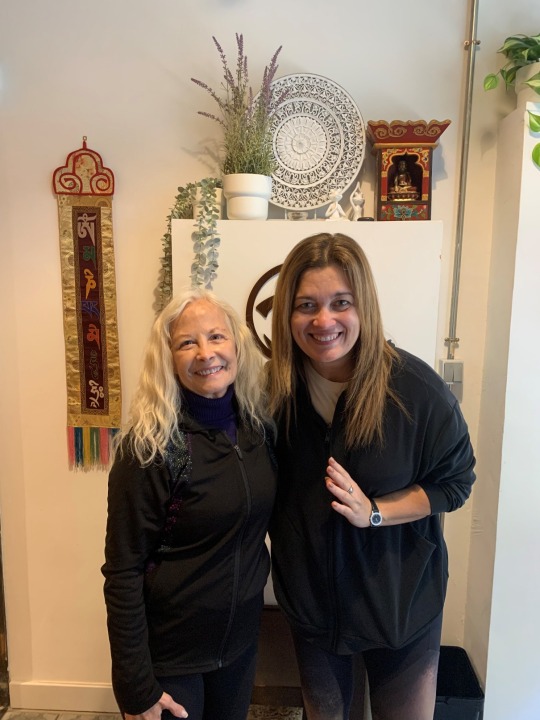
Today I went to Alicia Beltran's yoga studio with our young friend, Isabela, for an in-person yoga class. I haven't done many since the pandemic began because I have been doing almost all my yoga online. It was GREAT to be in a group and experience the positive energy of everyone in the room. It was relaxing and stimulating at the same time. Alicia is a very good teacher and I liked her style of teaching.

Isabela is SUCH a sweet person and very talented. You may remember having heard her sing in some of my other blog posts. She has a marvelous voice and a lot of charisma. I'm so happy she introduced me to Alicia and now I have the option of "attending" her classes in person or online.

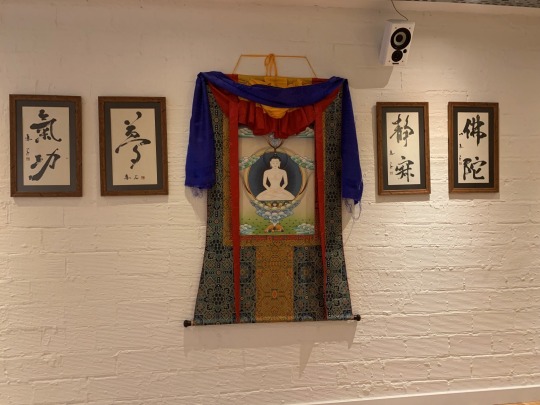

Alicia's studio has such a warm, comfy vibe and also it feels very spiritual and peaceful. She lives in the apartment behind the studio, which makes going to work VERY convenient for her. I'm looking forward to other sessions at the studio in the future.

After the class Isabela and I took the train to Vilanova i La Geltru where her mother, Jackie, who is also a good friend of ours, recently moved. Vilanova i La Geltru is a lovely little city just south of the tourist destination of Sitges. According to Wikipedia:
"Vilanova i La Geltru is the capital city of Garraf comarca, in the province of Barcelona, Catalonia, Spain. Historically a fishing port owned by the Vilanova family, the city has a growing population of approximately 66,000, and is situated 40 km south-west of Barcelona, with the more famous coastal resort of Sitges, some 10 km to the north-east.
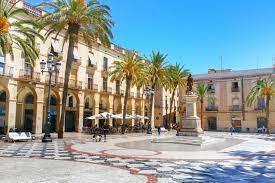

The town has a long history, and experienced an efflorescence during the Romantic period evidenced by a wealth of opulent 19th century buildings. The atmospheric town square, the Plaça de la Vila, and many of its iconic public buildings were principally financed by Josep Tomàs Ventosa Soler, a textile magnate who made his fortune in Cuba. A monument featuring a bronze statue of Ventosa stands in the center of the square. An identical monument stands in Matanzas, Cuba, where both statues were forged.
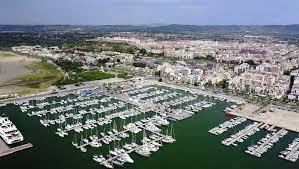
Agriculture and the maritime trade in wine were the traditional sources of income during the 18th and 19th centuries. Today, while agriculture and a significant fishing fleet continue to be sources of income, the primary economic activity is industry in the sectors of metal, textile and chemicals.
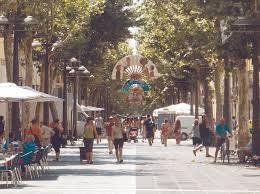
Vilanova i la Geltrú has embraced new technologies for generations and has had a vocational and traditional university since 1902, along with the UPC (Polytechnic University of Catalonia). The building Neapolis Public Innovation Agency for ICT and multimedia, was built in 2006."
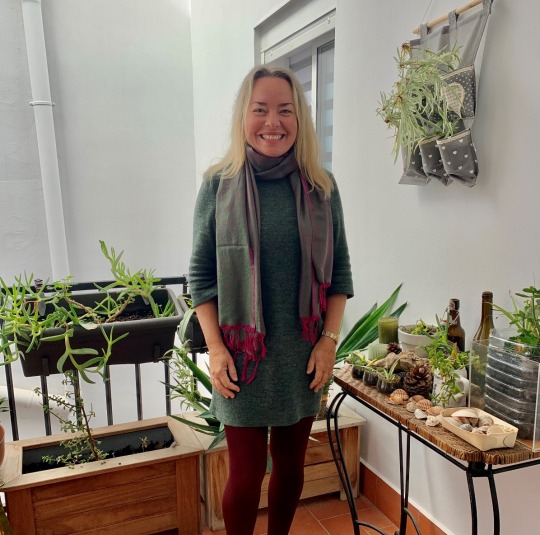
Jackie's apartment already felt quite homey and comfortable and she seemed very happy to be there. Isabela also lives there part time and part time with her father, Jonas, in Barcelona.
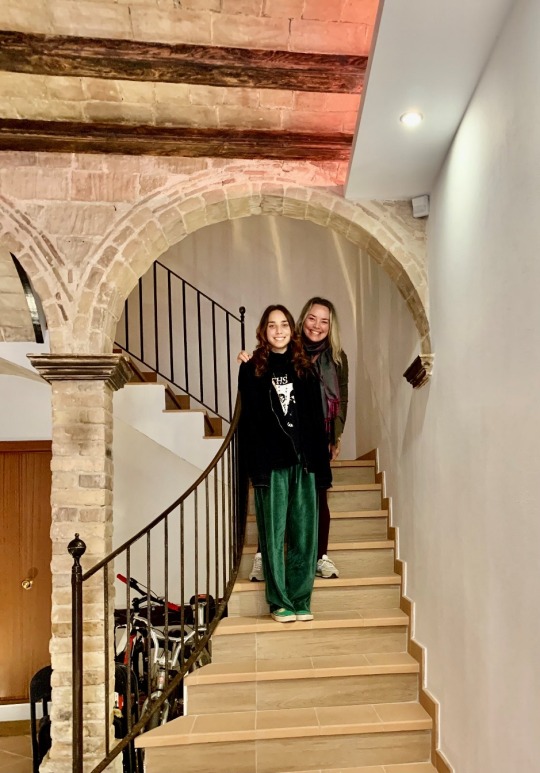
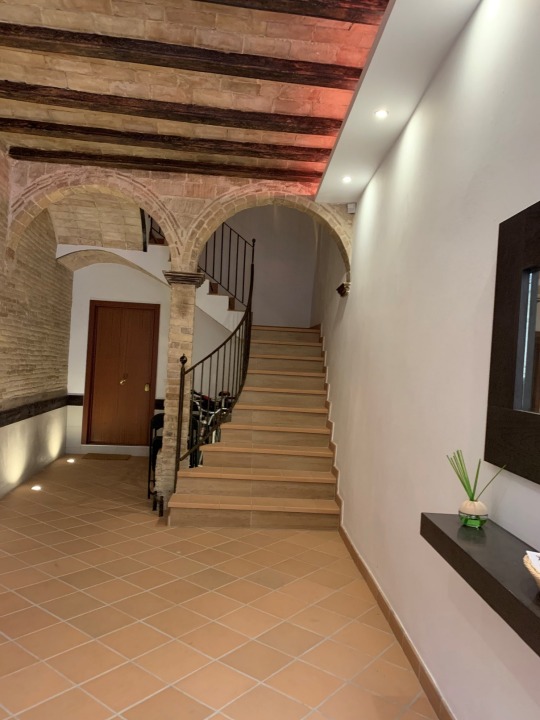
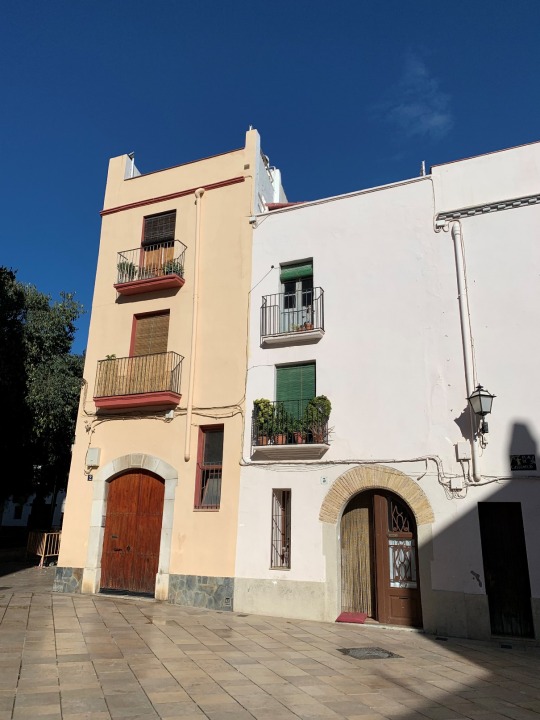
Before we went to a restaurant for lunch we took a short walk around the neighborhood so they could show me a bit of the city.
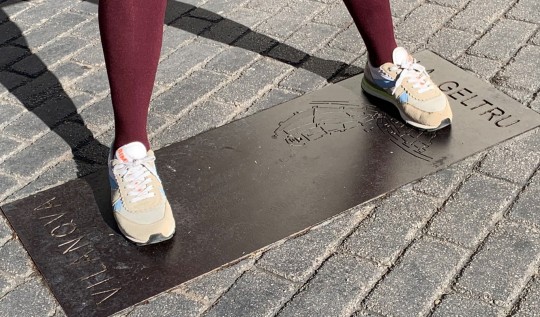
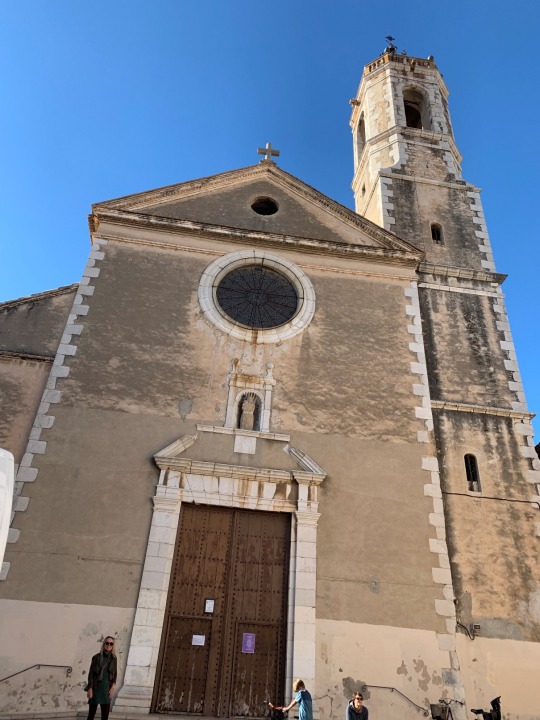
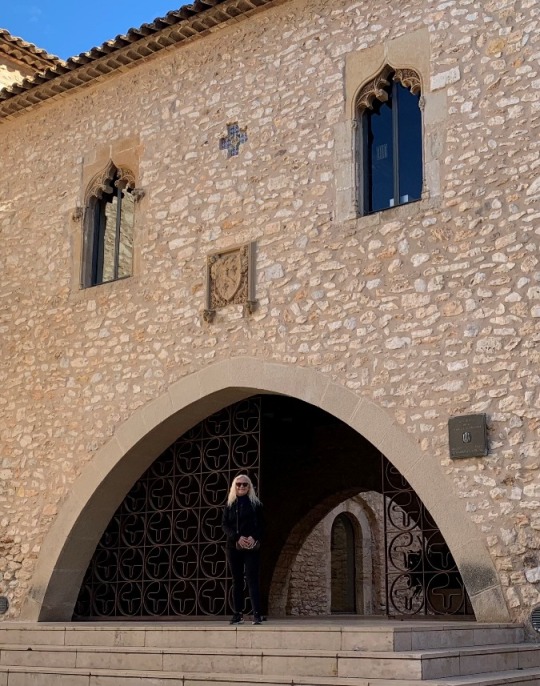
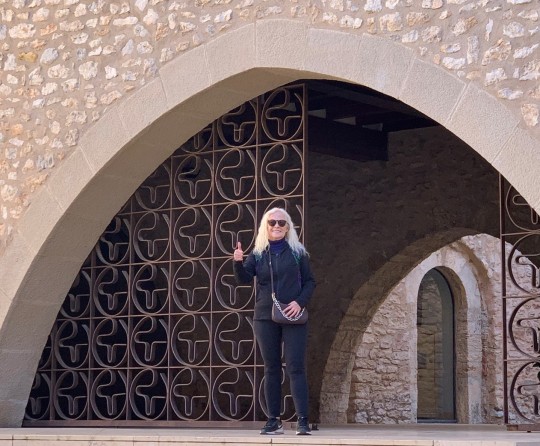
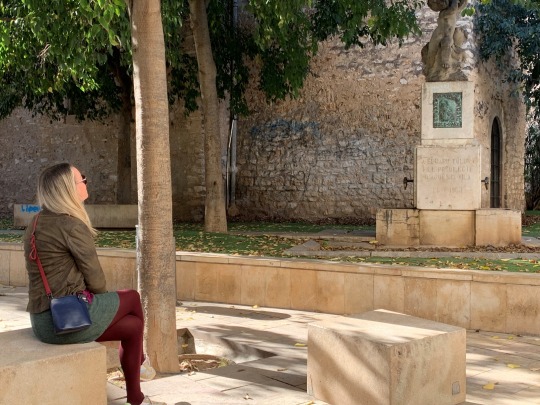
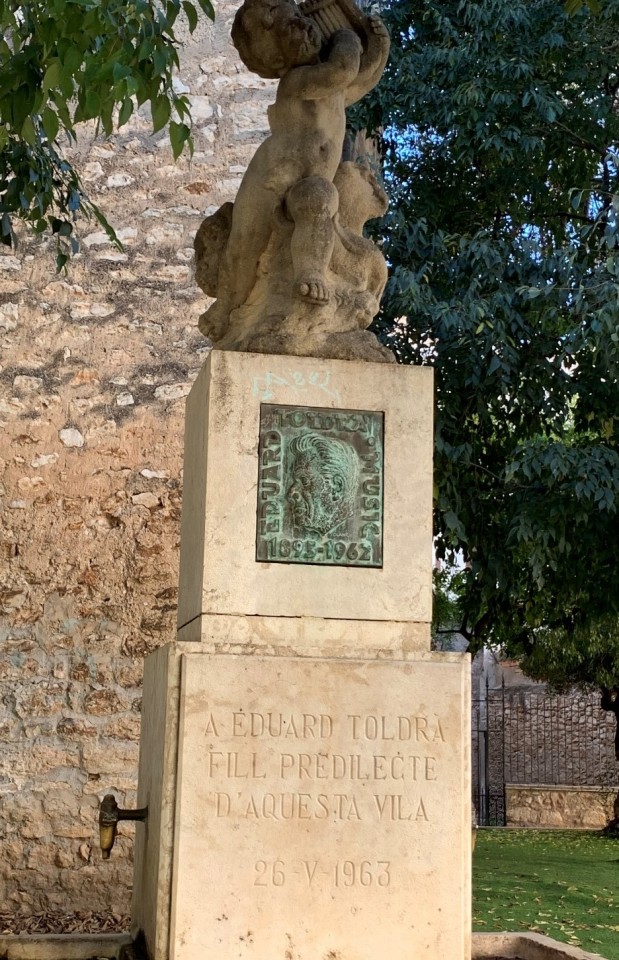
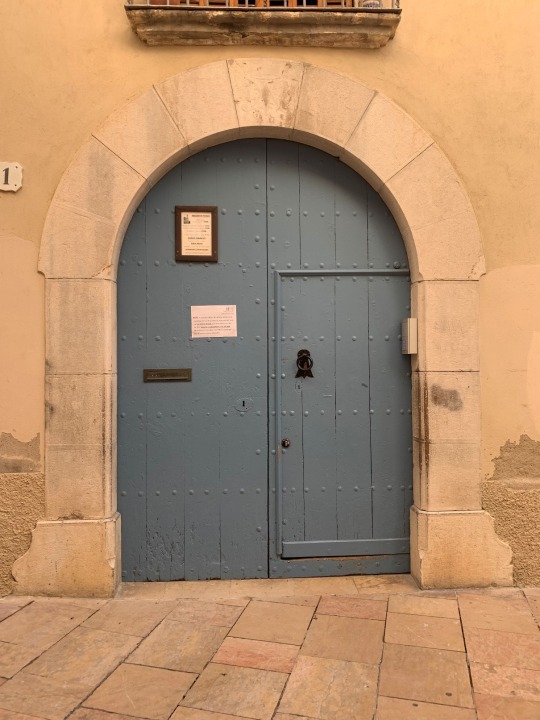

Lunch at the little restaurant behind their apartment building was yummy and there were quite a few vegetarian dishes I could eat. The ambiance was warm, light, and airy, with lots of artwork on the walls. It was wonderful to be with Jackie and Isabela and catch up on what's been happening in our lives, since we don't see each other often enough, especially now that Jackie is living in Vilanova i La Geltru.


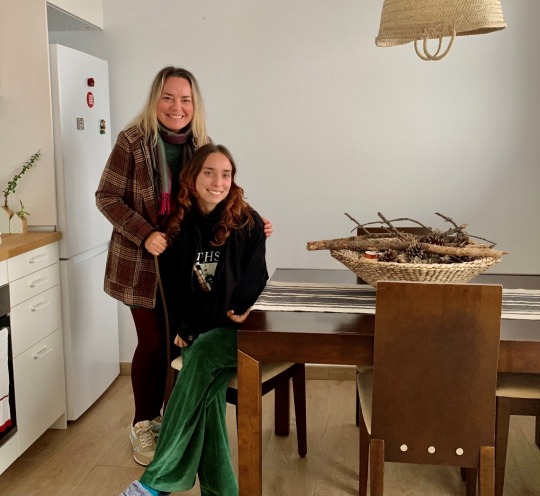
After lunch we went back to hang out at their place and chat before Isabela and I needed to head to the train station to go back to Barcelona.
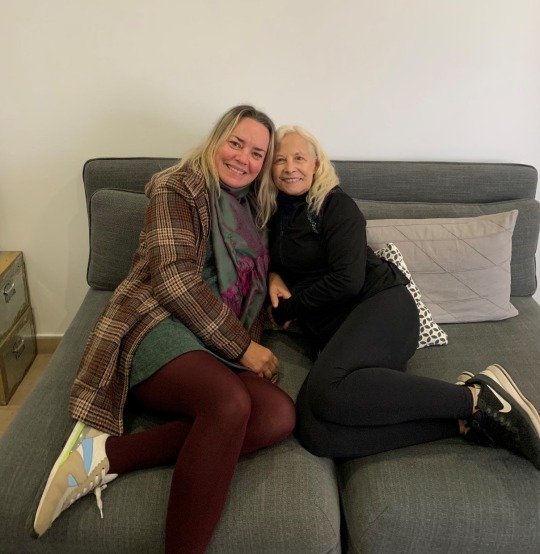
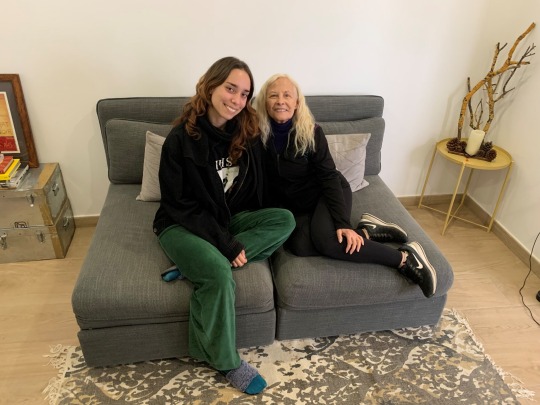
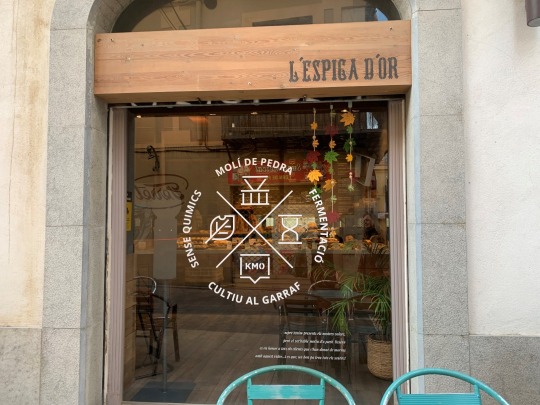
We stopped at a bakery on the way to the train station to buy some of the famous Garraf bread to take home to Bruce. It was a wonderful excursion and Isabela and I had more time to chat on the train because it's about a 45 minute ride between Barcelona and Vilanova i La Geltru.
0 notes
Text

Jagüey Grande, Matanzas Province, Cuba.
114 notes
·
View notes
Photo
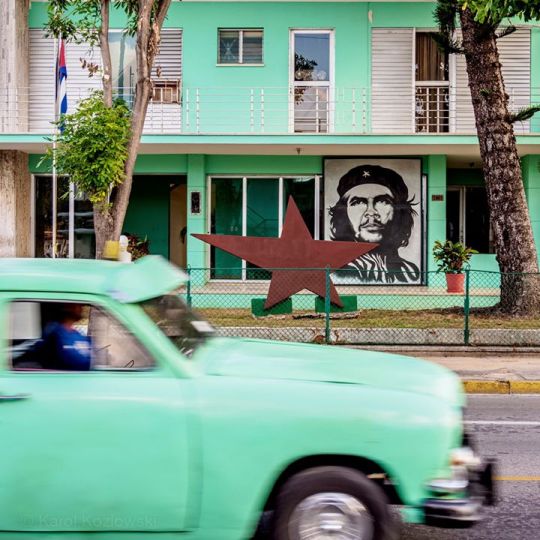
https://ift.tt/2QDN1pp
0 notes
Photo

Throwback Thursday: Fountain Statue (2016/12/24) #sugar #sugarcane #factory #museum #statue #sky #clouds #view #fountain #water #trees #matanzas #province #cuba #travel #vacation #december #tbt #throwbackthursday #josesmithcomas #history (at José Smith Comas, Matanzas, Cuba) https://www.instagram.com/p/B_5oIbvnrsP/?igshid=1i7prf67weexn
#sugar#sugarcane#factory#museum#statue#sky#clouds#view#fountain#water#trees#matanzas#province#cuba#travel#vacation#december#tbt#throwbackthursday#josesmithcomas#history
2 notes
·
View notes
Text
The 1776 British Defence of East Florida

Via the Boston Garrison Facebook page.
Thanks to Tomas G (East Florida Rangers) for today's post.
Q1. Can you explain the political landscape in East Florida in 1776? Did The Continental Congress view Florida as a possible "14th Colony" the way they did Canada?
A1. On July 20th 1776, after learning of the Declaration of Independence an angry mob formed on the streets of Saint Augustine demanding Governor Tonyn to take action against the newly formed United States. The mob was so enraged that they burned effigies of Sam Adams and John Hancock! The Continental Congress actually invited both East and West Florida to send delegates to attend their meetings in Philadelphia in 1775 however both colonies declined! East and West Florida were relatively new colonial possessions by the start of the war in 1775 and lacked severely in population and infrastructure which contributed significantly to the lack of revolutionary sentiment. The population of East Florida consisted primarily of merchants and plantation owners who had no reason to rebel, taxes in East Florida were low and land was cheap and in plentiful supply. However, this doesn't mean that there weren't those who were suspected of favoring the cause of American liberty!
Q2. In 1776, what military presence was in East Florida for the British?
A2. In 1776 the military presence was very small, in late 1775 Tonyn was forced to send away the bulk of the 14th regiment in Saint Augustine in order to assist Lord Dunmore’s campaign in Virginia. However, two companies from Pensacola belonging to 16th soon replaced them. Later that year three companies of the 60th Regiment under Augustine Prevost arrived, significantly increasing the military presence in the colony. In addition to Regular troops, the citizenry of East Florida formed several militia regiments all under the jurisdiction of Governor Tonyn.
Q3. Who was Patrick Tonyn? What role did he play in the defense of East Florida?
A3. Patrick Tonyn was born in 1725 in Ireland, he joined the British army in 1751 and served extensively in the Seven Years War. In 1774 Tonyn was appointed Governor of East Florida. Tonyn was an incredibly competent governor, and fought hard to secure the safety of his colony. In an attempt to alleviate the strain placed on regular troops Tonyn raised several militia regiments in 1776, most famously the East Florida Rangers commanded by Thomas Brown the future superintendent of Indian affairs. These militia regiments acted primarily as raiders and scouts, providing Tonyn with invaluable information and supplying the growing colony with a steady supply of cattle stolen from Georgia. In the summer of 1776 Tonyn also oversaw the establishment of a provincial navy which would patrol the coast and inland waterways.

Q4. We are familiar with the Fort at St. Augustine, beyond that location, what other major geographical locations were considered strongholds in East Florida? Were any of them major objectives to the Continental invasion of the Province?
A4. So besides from Fort Saint Mark, there were several other fortifications in East Florida, for example there was a sizable military installation at Cowpens (Modern Day Jacksonville), there were also small fortifications located along Florida’s many waterways, most famously Fort Matanzas the site of the 1565 Massacre located just South of Saint Augustine. The Saint Mary’s River hosted several small fortifications like Fort Tonyn which was famously abandoned and burned by Thomas Brown and the East Florida Rangers during the second invasion of East Florida in June of 1778.
Q5. Multiple attempts by the Continental Forces were made to capture Florida. What do you attribute to the British/Loyalist/Allies ability to hold out throughout the AWI era and remain part of the British Empire?
A5. Simply put, the loyalists in East Florida had a resolve that could hardly be broken, many of the individuals who had fought against the invading rebels were refugees who had gone through hell and back. The Floridas were a safe haven to those being persecuted for their loyalty to Britain, from 1775 to the end of the war in 1783 thousands of people fled or migrated to the colony, many of whom came with nothing!
#american revolution#revwar#american war of independence#history#18th century#military history#florida#loyalist#loyalists
28 notes
·
View notes
Note
If you were to ask the people living in Buenos Aires, they'd probably tell you that it isn't that bad. -
Argentinian here. Yeah, this is not the best country to live in. But it's not like you do one step and you get mugged lol
Ben was walking in pretty decent neighborhoods. And they most likely were staying at some hotel in Puerto Madero, Palermo or Recoleta. And that damned places are very quiet and full of "gringos". Puerto Madero even more. Been there.
You want dangerous places? Go search La Matanza, Villa 31 or Villa 1-11-14.
Hell, I don't live in the capital but in a city of ~100k inhabitants in Buenos Aires Province and it's not that bad if you know how to move and don't walk alone at late hours.
My point is, if you take precautions such as not using your phone in crowds or leave it in your back pockets, you'll be fine. If you are aware of your surroundings, chances are low.
You can get mugged everywhere in the world.
Sorry for my rant but it annoys me people saying bullshit
You don't have to apologize for being angry at this.
I live Québec city, it's one of the safest place in Canada but there pickpockets and mugging here to. The septics can't deal with reality and that's the best thing to could think of to convince themselves the kids aren't there.
5 notes
·
View notes